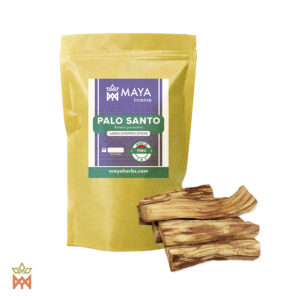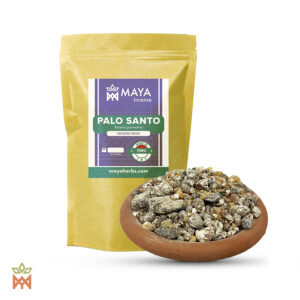More about Palo Santo
Palo Santo, scientifically known as Bursera graveolens, is a mystical and revered tree native to South America, particularly found in the regions of Ecuador, Peru, and the Galapagos Islands. Its name translates to "holy wood" in Spanish, reflecting its sacred and spiritual significance across various indigenous cultures and traditions. In this comprehensive exploration, we delve into the rich history, shamanic use, botanical information, and diverse forms and uses of Palo Santo.
History and Shamanic Use
Palo Santo has a long and storied history dating back thousands of years, where it has been revered as a sacred and potent tool for spiritual purification, healing, and protection. Indigenous tribes such as the Incas, Quechua, and Chimu have long used Palo Santo in their shamanic rituals, ceremonies, and medicinal practices. It is believed that the aromatic smoke produced by burning Palo Santo wood can cleanse negative energies, ward off evil spirits, and promote spiritual clarity and well-being.
Use of the Incas
The Incas, one of the most advanced civilizations in pre-Columbian South America, held Palo Santo in high regard for its medicinal and spiritual properties. They used the wood in various rituals, including offerings to the gods, purification ceremonies, and healing treatments. Palo Santo was considered a sacred gift from Mother Earth, revered for its ability to connect the physical and spiritual realms and facilitate communication with the divine.
Botanical Information
Palo Santo belongs to the Burseraceae family and is closely related to other aromatic trees such as frankincense and myrrh. It is characterized by its distinctive sweet, woody aroma and pale yellow to brownish bark. The tree typically grows to a height of 4-10 meters and thrives in dry, tropical forests with sandy soils. Palo Santo trees are known for their resilience and ability to withstand harsh environmental conditions, making them a symbol of strength, endurance, and vitality.
Different Forms and Uses
Palo Santo is available in various forms, each with its own unique uses and applications:
- Palo Santo Wood: The most common form of Palo Santo is the raw wood itself, which can be harvested from fallen branches or sustainably sourced from mature trees. The wood is often used in smudging rituals, where it is burned as incense to cleanse and purify the energy of a space, invite blessings, and promote spiritual harmony and well-being.
- Palo Santo Essential Oil: Palo Santo essential oil is extracted from the resin-rich heartwood of the tree and is prized for its therapeutic properties. It is used in aromatherapy to promote relaxation, reduce stress and anxiety, and enhance spiritual awareness and meditation practices. Palo Santo oil can be diffused, applied topically, or added to bathwater for a rejuvenating and uplifting experience.
- Palo Santo Incense Sticks: Palo Santo incense sticks are another popular form of Palo Santo, where the wood is ground into a fine powder and combined with natural binders to create stick incense. These incense sticks are convenient and easy to use, providing a steady release of fragrant smoke when burned. They are often used in meditation, yoga, and energy cleansing rituals to purify the air and create a sacred atmosphere.
Spiritual and Healing Properties
Palo Santo is revered for its potent spiritual and healing properties, which are believed to promote physical, emotional, and spiritual well-being. It is said to have purifying and cleansing effects on the aura and energy field, helping to release stagnant energy, negative emotions, and psychic debris. Palo Santo is also prized for its ability to enhance intuition, intuition, and insight, making it a valuable tool for meditation, divination, and spiritual growth.
Sustainable Harvesting and Conservation
As the demand for Palo Santo continues to grow, there is increasing concern about the sustainability of its harvesting and conservation of its natural habitats. To ensure the long-term viability of Palo Santo trees, it is essential to practice responsible harvesting techniques and support sustainable cultivation and reforestation efforts. By sourcing Palo Santo from reputable suppliers who prioritize ethical and environmentally friendly practices, we can help protect this sacred tree for future generations to enjoy and benefit from.
Conclusion
In conclusion, Palo Santo is a revered and sacred tree with a rich history and profound spiritual significance. From its use in ancient shamanic rituals to its modern applications in aromatherapy and energy cleansing, Palo Santo continues to captivate and inspire people around the world. Its sweet, woody aroma, therapeutic properties, and symbolic importance make it a cherished ally for spiritual seekers, healers, and practitioners of holistic wellness. As we honor the ancient traditions and wisdom associated with Palo Santo, let us also strive to protect and preserve this precious gift from Mother Earth for generations to come.











